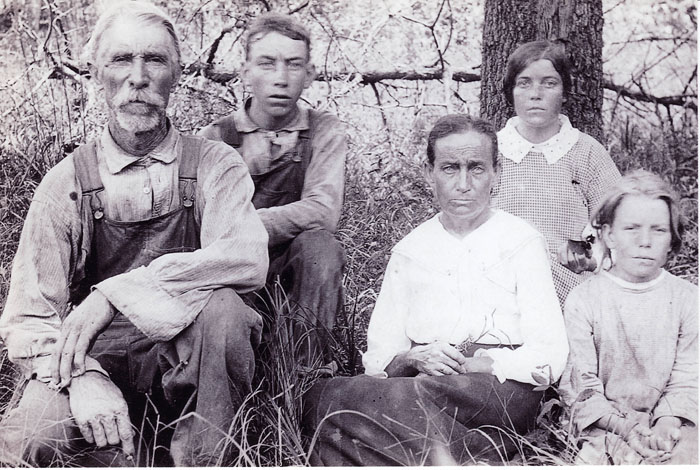Photography Lessons
First,
please let me be clear about something. Neither I nor my wife are
professional photographers. Neither of us has ever sold a photo
nor have we ever had a formal lesson in photography. Everything
I'm about to share with you has come from the school of hard knocks --
Life's experience.
We own a 2006 Canon 8 megapixel,
semi-professional camera, a Digital Single-Lens Reflex
(DSLR) model 30D. The Single-Lens Reflex part is because of
the through-the-lens viewing. A mirror allows you to see from the
view finder through the lens, then flips out of the way (reflexes),
when you take the picture. That way there's only a Single Lens to
look through. We bought ours new. They're now on eBay
priced from $400 to $600.
In cheaper film cameras, there are two
lenses, the camera lens and the view finder lens. You only see
what's in a separate view finder, NOT what comes through the camera
lens and goes on film. You can't see dust or scratches. You
can't even see if your finger is in the way. That's why with
expensive SLR cameras, what you see is what you get.
With the
introduction of inexpensive digital snapshot cameras with a display on
back of the camera, it's more like an SLR. What you see is what
you get (almost). It won't show you the exact frame of the lens,
which is definitely different. That's why with inexpensive
digital cameras it's possible to chop someone nearly out of a photo
without realizing it. I've owned 4 digital snapshot cameras in
the past 10 years priced from $100 to $230. Cameras from about
$60 take great photos! The cheapest digital cameras are just that
-- cheap. Don't waste your money on them.
The Lessons
In
the lessons below, I'll show you some random things I've learned about
inexpensive snapshot cameras and some comparisons to the more expensive
DSLR cameras with interchangable lenses. I'll even compare some
different models. I'll briefly discuss photo editing software and
backing up your photo collection. Now, on to the lessons.
Lesson #1 -- A Wineglass
This lesson will show several things you need to know about taking digital photos such as:
- What's a megapixel?
- Does picture size or file size matter?
- How important is the lens? lighting? color? correct framing?
- What's all this fuss about editing photos after you take them?
- Can I pay as little as $65.88 (Walmart price)and still get a great snapshot camera?
For answers to these and other questions, CLICK THE WINEGLASS above and go to Lesson #1.
Lesson #2 -- File Sizes
This
lesson gives you examples of various sized photos, tells you how to
take them, and explains the differences. It also tells you how
and why to make backup copies to preserve your digital photos.
For answers about digital photo file sizes and making backups, CLICK THE BANANA above and go to Lesson #2.
Lesson #3 -- Image Sensor Size
This
lesson gives one reason why expensive cameras take pictures that are so
much better looking than cheap cameras. Keep in mind that you can
still take great photos with cheaper cameras by learning what's in the
previous two lessons. For a look at the INSIDE of a Camera and it's sensor, CLICK HERE. After viewing the page on sensor sizes, hit your browser's back button to return to this page.
I
mentioned in Lesson #2 that the full width and height of the image
sensor (CCD or CMOS) is used when a camera is set to it's largest
filesize.
The image sensor is what receives the light. The size of
the image sensor is important. Most inexpensive digital snapshot
cameras have small sensor. The smaller the sensor, the lower the
quality of detail. A larger (but more expensive) sensor yields
crisp, clear edges and sharper focused pictures. As a side note,
some say the biggest difference between Canon and Nikon is Canon takes
richer colors and Nikon takes sharper pictures.
The size of the
CMOS image sensor in Linda's Canon DSLR (digital single-lens reflex)
camera is 22.5 x 15 mm That's about 7/8" by 5/8".
A used
Canon Powershot A100 1.2MP camera is going for about $15 on eBay.
It's CCD sensor was 4.5 mm X 3.4 mm about 1/4 the size of the
DSLR.
Think about it. When you look through a cheap
telescope with a small receiving lens, you can't see much at a
distance. But when you pay a few coins to look through the large
lens of a pay telescope at a national park overlook, you see everything
in crisp detail. It's the difference between looking through a
peephole and looking through a pane of glass. Speaking of a pane
of glass, old portrait studio camera's didn't use 35 mm plastic film.
They used 4 inch by 5 inch glass plates. That's like
looking through a window pane -- huge! Imagine an image sensor
that large. The photo quality of those old cameras was
unbelievable even by today's standards. That's the level of
quality today's better digital cameras are trying to achieve.
If
you'd like to look at that type quality, here's a photo of my
great-grandfather's family taken 85 years ago with one of those cameras:

Here's
an even better example of sensor size quality. These photos were
all taken in 4" X 5" format during WWII. Pay attention to the
photo detail:
This page was last updated on November 23, 2013

